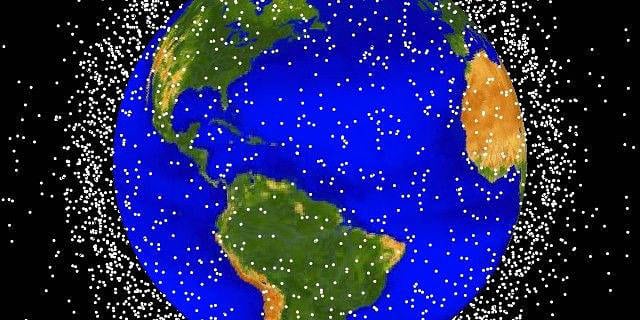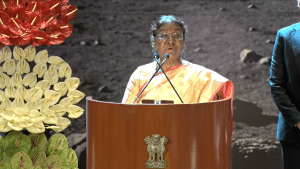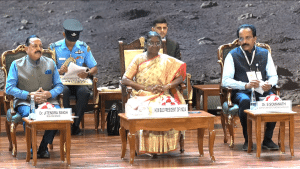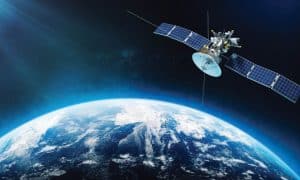The Federal Communications Commission (FCC) on Thursday mandated satellite operators to dispose of satellites within five years completing their missions. The rule pertains to satellites in Low Earth Orbit, and is seen as an important step in a new era for space safety and orbital debris policy. The new rule replaces the earlier decades-old 25-year guideline for deorbiting satellites post-mission.
“There are more than 4,800 satellites operating in orbit as of the end of last year, and the vast majority of those are commercial Low-Earth orbit (LEO) satellites. The new five-year rule for deorbiting satellites will mean more accountability and less risk of costly collisions that increase debris,” the commission said in a statement.
According to an FCC document released earlier this month, At risk is more than the USD 279 billion-a-year satellite and launch industries and the jobs that depend on them. Satellites connect the most remote locations in the world to high-speed broadband. They help us navigate unfamiliar roads, broadcast video to millions of viewers, connect us to financial services, and provide imagery that can help us monitor climate change and other environmental problems. When disaster strikes, satellites help organize first responders, the government, and humanitarian organizations and make it possible to coordinate effective relief efforts. Left unchecked, orbital debris could block all of these benefits and reduce opportunities across nearly every sector of our economy.
Satellite companies will get a transition period of two years. The move in general have found support from the satellite operators, who have, however, requested for some adjustments as to how FCC would treat some satellites or constellations.
The FCC said it was addressing the new space age with “modernized regulations to match the new realities, support for technological innovation in this burgeoning economic sector”. In this background, it feels the space sustainability questions that come with rapidly growing and changing public and private space endeavors needs to be taken seriously.
The commission had in fact highlighted its intention earlier this month, and said it planned to take up the five-year rule at its Open Commission Meeting scheduled for September 29.
“The Commission will consider a Second Report and Order that would adopt rules requiring low-Earth orbit space station operators planning disposal through uncontrolled atmospheric re-entry to complete disposal as soon as practicable, and no more than five years following the end of their mission,” Federal Communications Commission Chairwoman Jessica Rosenworcel had said.
High on US Administration agenda
Increasing orbital debris and sustainability of space has been a hot topic for some time, and the US Administration has been trying to address the issue as it feels the growing challenge of orbital debris poses a significant risk to US space ambitions.
In July this year, the White House Office of Science and Technology Policy (OSTP) issued the National Orbital Debris Implementation Plan, which builds on previous implementation plans to limit the amount of orbital debris. The plan identifies 44 specific actions for agencies across three pillars with the goal of promoting the United States not only as a leader in space activities, but also as a responsible and sustainable actor in the space environment.
The Administration’s seriousness about the issue could be gauged by the fact that when in April it voluntarily announced a unilateral ban on the testing of anti-satellite (ASAT) weapons. Since then, it has actively lobbied for other countries to do so, and very recently Vice President Kamala Harris, who is also the Chairman of the Space Council, had said the government was planning to introduce a resolution in the United Nations calling on more nations to join its pledge for moratorium on ASAT tests.
While United States has not conducted an ASAT test ibn recent years (the last one being February 2008), the move is largely seen as an active stand against Russia’s November 2021 anti-satellite missile that struck a defunct Soviet-era spy satellite in LEO. The test created at least 1,632 pieces of space debris, according to a US Space Force database of orbital objects, posing risks to active satellites in orbit and also International Space Station, where US astronauts were forced to seek shelter in their docked capsule.
Growing orbital debris
Increase in space debris is a direct result of the increasing number of satellites being launched. While the 2010-19 period saw on average 300 satellites being launched per year, according to database maintained by UCS (Union of Concerned Scientists) as of May 1, 2022 around 1,200 of the 5,000+ satellites currently orbiting the Earth were launched in 2020 alone.
On the other hand, as of January 2022, there were over 25,000 objects of at least 10 cm in size that could be tracked and cataloged, according to a new Pentagon report.
Prior to 2007, most debris came from explosions of upper stages of satellite launch vehicles. But, according to the Pentagon report, nearly 50 percent of all cataloged debris today are fragments from three major events – “China’s destruction of its own defunct weather satellite in 2007, the accidental collision between a US communications satellite and a dead Russian satellite in 2009, and the 2021 Russian Nudol ASAT test”. The United States conducted its last anti-satellite test back in 2008.
The primary risk to a spacecraft is from uncataloged lethal nontrackable debris (LNT). These are objects between 5 mm and 10 cm, and anywhere between 600,000 and 900,000 pieces of LNTs are estimated to exist in the LEO.
The space debris problem is so bad that it would continue to be a “formidable problem” even if legally binding international guidelines were set and were 100 percent complied to, the Pentagon report notes.









